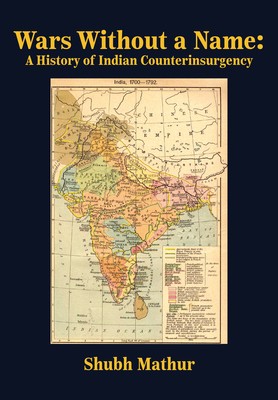
- Išsiųsime per 12–18 d.d.
- Autorius: Shubh Mathur
- Leidėjas: Academica Press
- ISBN-10: 1680535773
- ISBN-13: 9781680535778
- Formatas: 15.2 x 22.9 x 1.6 cm, kieti viršeliai
- Kalba: Anglų
- Extra -15 % nuolaida šiai knygai su kodu: ENG15
Atsiliepimai
Aprašymas
Indian counterinsurgency has expanded steadily over the years, adding a new region in each decade since the 1950s. Beginning with Nagaland, these wars without a name have followed a remarkably consistent pattern throughout the Northeast, in Punjab, Kashmir, and the central Indian Tribal Belt up to the present day. Such shared features as blanket repression, intensive military mobilization, large scale violence against civilians, and the de jure and de facto impunity given to military and police forces provide an important corrective to facile descriptions of India as the "world's largest democracy." Received wisdom in Indian politics has long held that a strong, centralized government is needed to manage and control the wealth of diversity and pluralism that characterizes the subcontinent. In practice, the imbalance created by a powerful center and the absence of regional autonomy has produced a pattern of cumulative and escalating ethnic and regional conflict. This pattern is characteristic of the post-independence state in India, and indeed in all of South Asia. It might be seen as the outcome of the superimposition of a strong centralized power structure and extractive economy on a terrain of ethnic and religious difference. Read as a whole, these conflicts provide a portrait of the relationship between Indian state and society on the one hand and ethnic and religious minorities on the other.
EXTRA 15 % nuolaida su kodu: ENG15
Akcija baigiasi už 4d.20:54:20
Nuolaidos kodas galioja perkant nuo 10 €. Nuolaidos nesumuojamos.

- Autorius: Shubh Mathur
- Leidėjas: Academica Press
- ISBN-10: 1680535773
- ISBN-13: 9781680535778
- Formatas: 15.2 x 22.9 x 1.6 cm, kieti viršeliai
- Kalba: Anglų Anglų
Indian counterinsurgency has expanded steadily over the years, adding a new region in each decade since the 1950s. Beginning with Nagaland, these wars without a name have followed a remarkably consistent pattern throughout the Northeast, in Punjab, Kashmir, and the central Indian Tribal Belt up to the present day. Such shared features as blanket repression, intensive military mobilization, large scale violence against civilians, and the de jure and de facto impunity given to military and police forces provide an important corrective to facile descriptions of India as the "world's largest democracy." Received wisdom in Indian politics has long held that a strong, centralized government is needed to manage and control the wealth of diversity and pluralism that characterizes the subcontinent. In practice, the imbalance created by a powerful center and the absence of regional autonomy has produced a pattern of cumulative and escalating ethnic and regional conflict. This pattern is characteristic of the post-independence state in India, and indeed in all of South Asia. It might be seen as the outcome of the superimposition of a strong centralized power structure and extractive economy on a terrain of ethnic and religious difference. Read as a whole, these conflicts provide a portrait of the relationship between Indian state and society on the one hand and ethnic and religious minorities on the other.


Atsiliepimai